Machine learning and deep learning are becoming increasingly popular, and this is affecting every industry. This applies to any company, big or small. It’s clear that Machine Learning is needed, but most businesses ignore the fact that software developers and support staff can’t use any old laptop for it. Data scientists, deep learning practitioners, and machine learners are all on the lookout for ways to improve their devices’ performance.
Factors Affecting Portability
Portability is an important consideration when looking for the best laptop for machine learning, but if portability isn’t a concern, you may want to consider a custom PC, which we’ll cover in more detail later in this article.
The more processing power a laptop has, the larger and heavier it becomes. This could imply a number of different things.
- More RAM equates to a heavier package.
- More batteries equate to more weight.
- A larger screen means the device will weigh more.
- Higher power consumption reduces battery life.
Choosing the Right One
The decision to buy a laptop for any reason is a perplexing one for many of us, but the decision to buy a laptop for Machine Learning is even more difficult.
Questions abound, such as which platform is best for running the program you want to run? How quick is the computer’s processing speed? Does the laptop have enough portability so that I can use it for presentations and other similar events? What’s the graphics card’s processing power?
In order to assist you in making this difficult decision, we will divide laptops into four categories: laptops, desktops, Do-it-yourself systems, and if we have enough time, the best cloud option for heavy files and programs.
Factors to Consider When Choosing a Device for Machine Learning
As with any other technology device, there are things to think about before investing in a Machine Learning system. The following are things you should know if you want to have a smooth working day with fewer hiccups.
Portability and Processing Power
While we want to be able to take our laptops with us wherever we go, this isn’t always possible. If we need a device with enough speed and power to do our work, we may have to sacrifice portability.
It’s a simple philosophy: if you want something lightweight and portable, you’ll have to give up processing power. If processing power is more important to you, you can forget about slinging your laptop over your shoulder and instead use a trolley to transport it.
The processor, RAM, GPU, storage, and operating system of the laptop are also essential, but the processor is the most critical.
RAM
Because of the complex algorithms used in Machine Learning, the amount of RAM is an important consideration when selecting a laptop. To follow the advice of tech experts, the ideal RAM size is 16 or 32 gigabytes. However, 8 gigabytes will be more than enough for most programs to run smoothly.
The more RAM a laptop has, the faster its MLAI algorithms can run, so this should be taken into consideration when shopping for a laptop. You should be aware that due to the heaviness of Machine Learning algorithms, 32 gigabytes will perform exceptionally well with all the large files and networks that are computed by Machine Learning programs.
Graphic Processing Unit(GPU)
Despite the fact that RAM is critical, a powerful GPU is also required. To do deep learning, you need a lot of neural networks, lots of expensive computation, and huge matrices to enable seamless parallelism. This can take months without a good graphics processing unit, which is not ideal if you have a program you want to release quickly.
A powerful GPU, on the other hand, will speed up computation, allowing you to work with different versions and finish research on time regardless of how complicated the algorithms are.
As a machine and deep learning enthusiast, you’ll find that a laptop equipped with an NVIDIA GeForce 10 series GPU easily handles all of your programs. For those who can’t afford the NVIDIA GPUs, the AMD Radeon is a great alternative for Machine Learning.
Processor
Any Intel Core i5 or lower processor is not recommended for the Machine Learning program. When it comes to processing power, the latest 9th Generation Intel Core i7 is exceptionally adequate and enables seamless computations. If you can afford it, go with that.
Storage
There can be no compromise when it comes to storage; at the very least, you’ll need a Terabyte of Hard Disk. This is due to the fact that the data set grows larger with each computation.
If you can afford it, a 256 GB SSD is the bare minimum; however, you’ll need external storage support or even go with a cloud storage system that gives you access to virtually unlimited space.
Operating System
Although Linux is the most popular choice, it will work just as well on a Mac or Windows computer running Linux as a virtual machine with Bootcamp or Parallels.
LIST OF TOP 13 LAPTOPS
- RAZER BLADE 15
Razer Blade is now one of the best laptops for Machine Learning thanks to recent upgrades that give you more features and allow you to work more efficiently without being interrupted.
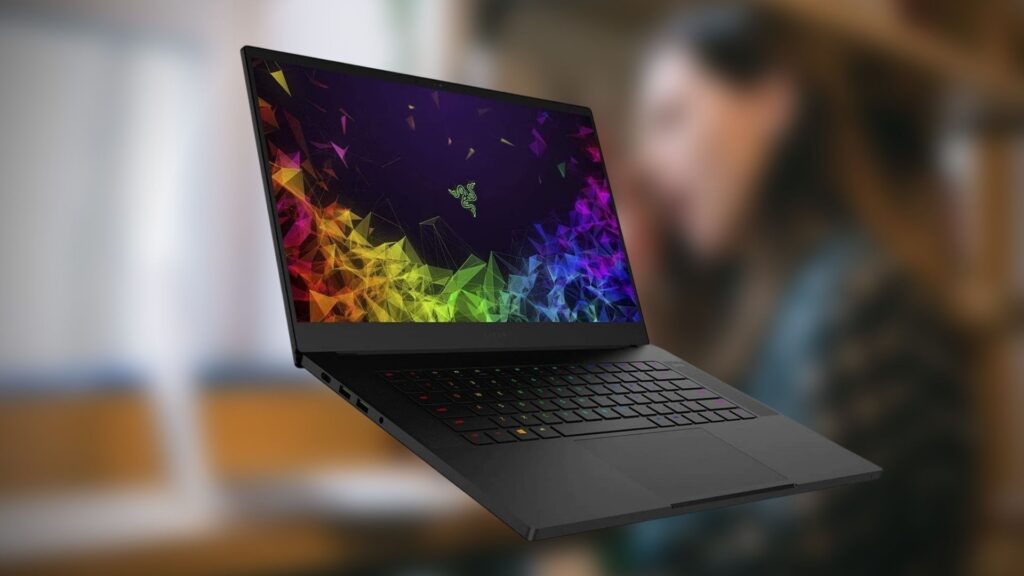
Features:
- The Razer Blade is without a doubt one of the best laptops for Machine Learning or any other complicated programme or multi-tasking on a laptop. Nvidia’s new turning graphics on the new Razer make it the best and most improved for Machine Learning.
- However, even though the Razer Blade isn’t a cheap laptop, its feature set makes up for the cost.
- The Razer Blade has an aluminium body and the Razer logo is prominently displayed on the cover. Weighing in at 2.1 kilogrammes, this thin device has a 15-inch screen and a webcam that’s perfectly placed for video communication with your teams while you work.
- Because you’ll be using this laptop for Machine Learning, it has a soft keyboard that doesn’t require an extra hard press. Additionally, the keys are spaced correctly so they won’t interfere with one another when you’re typing.
- Because of its high sensitivity and responsiveness to touch and gestures, the Razer precision pad can be used without a mouse and still be a pleasure to use.
- There is no doubt that you will enjoy incredible visual, colour brightness and clarity with this device’s display, which has a 1080p resolution, 144 Hz refresh rate, and a 100 percent sRGB colour gamut. Nvidia UHD 630 graphics distinguish colours like never before, allowing you to clearly see and separate different parts of your project.
- With all these features and specs, the Razer Blade 15 has an amazing battery life of up to 5 hours, which is less than its predecessor but very good in comparison to the capacity and performance level of this laptop.
- Despite having two fans to help with cooling, the Razer Blade 15 needs to be improved because it gets hotter when working on heavy projects for extended periods of time.
Pros:
- Has the ability to run a wide range of programmes without affecting the device’s speed or performance.
- Thunderbolt 3, HDMI 2.0, and a 1.4-inch mini display port are just a few of the available ports.
- The GPU/CPU combination delivers incredible results.
- Windows Hello IR camera is included.
- Dolby Atmos audio and speaker quality is outstanding.
- Front camera with a resolution of 720 pixels.
- Excellent Bluetooth and wireless connectivity thanks to Intel.
- At only 2.21 kilogrammes, this device is both portable and durable.
Cons:
- The starting price is quite high.
- While gaming, the chassis gets hot in places.
As a whole, Razer Blade is still a household name when it comes to display devices, and the Blade 15 is no exception. This is a great laptop for Machine Learning because of its stunning design, powerful CPU and GPU, long battery life, and compatibility with a wide range of software.
Specification Table:
| Display Size | 15.60 inch |
| Display Resolution | 2560 x 1440 pixels |
| Touchscreen | No |
| Processor | i7 Core |
| RAM | 8 GB |
| OS | Windows 10 |
| SSD | 1 TB |
| Graphics | Nvidia GeForce GTX 1060 |
| Weight | 1.99 kg |
- MSI GS65 STEALTH-002 15.6″
This ultra-performance laptop from MSI has amazing features and can be used for high-level programmes, gaming, and heavy files without sacrificing the capacity and strength to deliver results. Another outstanding MSI Machine Learning laptop.
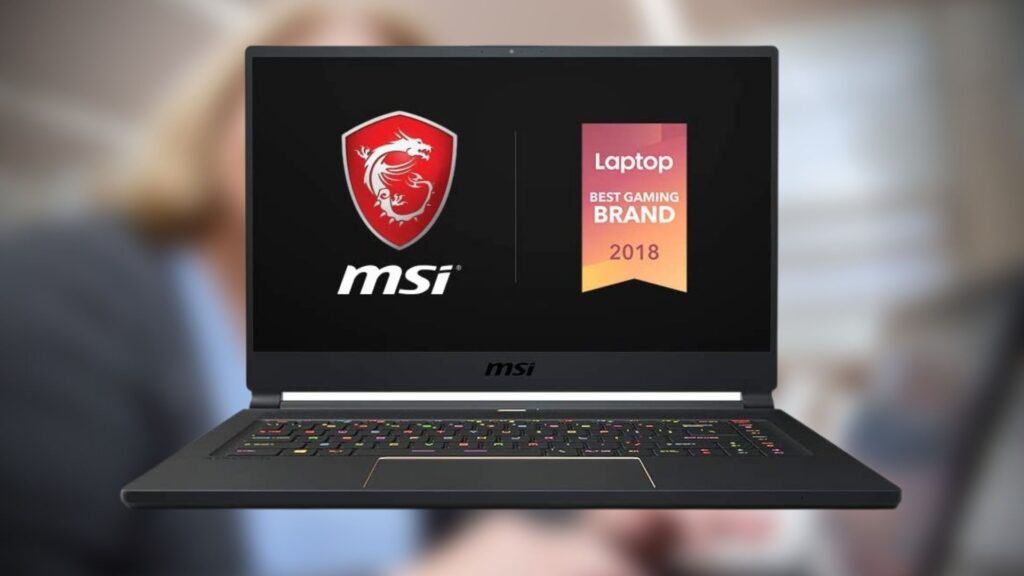
Features:
- The GS65 has a 15.6-inch 144Hz IPS screen with Razor-thin Bezel edges and a large enough viewing screen of 82 percent screen to body ratio, making it exceptionally valuable for programmers, gamers, and Machine Learning enthusiasts.
- A silky glass precision touchpad complements the laptop’s gold edge trims by enabling precise clicks, taps, and scrolls. Gestures allow you to control every aspect of the GS65’s operation. We hope you enjoy disco because the keyboard changes colours to create an eye-catching panel that lets you work even in the dark.
- This laptop’s portability is another plus; it’s made of strong, lightweight aluminium for an irresistible combination of style and professionalism.
- Is there a sound required? A 10-decibel Dynaudio speaker system is built into the GS65, so you won’t need any additional audio equipment to hear it, except if you want to raise the roof of the neighbor’s house.
- When you’re working long hours, three cooling fans, six pipes, and two exhaust pipes will keep your system cool enough to keep your GPU and CPU working properly without interfering with your work.
- GeForce RTX 20-series graphics power this laptop’s gaming and machine-deep learning capabilities, as well as a robust framework to keep you going even when doing multiple things at once.
Pros:
- A power bank adapter is included with the GS65, so you’ll never be without power again.
- 8-hour battery life ensures uninterrupted use throughout the day.
- Thunderbolt 3 compatibility means multiple USB ports.
- Portable laptop that is less than 2 kilogrammes in weight.
Cons:
- Battery life is 8 hours with light programmes, but only 3 hours with heavy programmes like Machine Learning.
Use the MSI GS65’s Machine Learning features to your advantage. With a headset jack and a powerful user interface, you’re sure to have the best laptop for multitasking and creating wonders in the privacy of your own home. The GS 65 is also a great laptop for students who want to dabble in machine learning (ML) or gaming.
Specification Table:
| Display Size | 15.60 inch |
| Display Resolution | 1920 x1080 pixels |
| Touchscreen | Yes |
| Processor | i7 Core |
| RAM | 16 GB |
| OS | Windows 10 |
| Hard Disk | 1 TB |
| SSD | 512 GB |
| Graphics | NVIDIA GeForce RTX 2070 |
| Weight | 1.88 kg |
- MICROSOFT SURFACE BOOK 3
The Surface Book 3 is an ambitious device that aims to combine the best qualities of all three current laptop genres into a one-stop shop. Digital artists and on-the-go professionals who require the portability of a detachable tablet as well as significant graphics horsepower will likely benefit the most from it. However, anyone with deep enough pockets could revel in this category-defying device’s unique capabilities. Nothing else compares to the Surface Book 3 from Microsoft or any other mainstream laptop manufacturer. It makes a compelling case for being the ultimate Windows device.
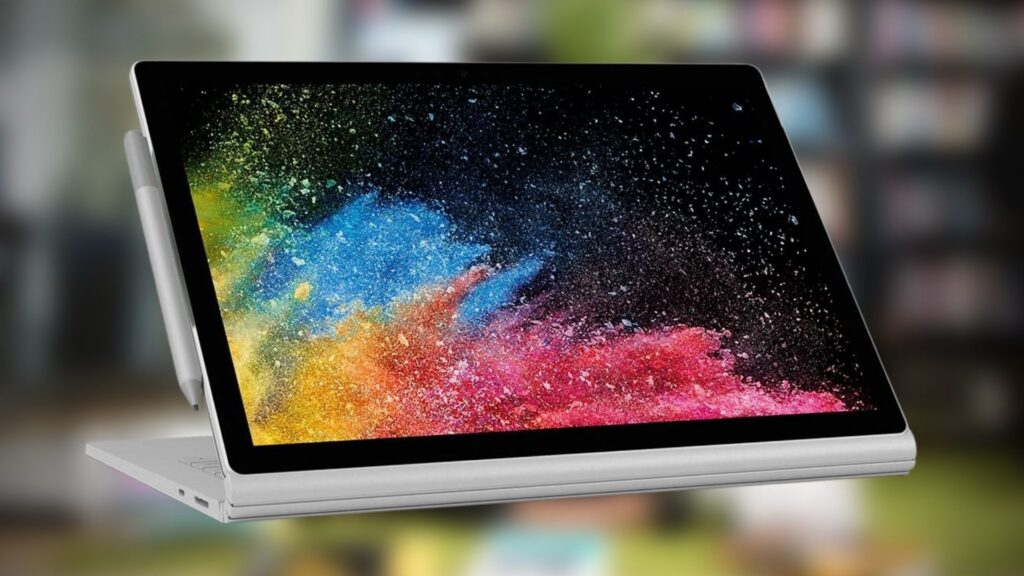
Features:
- It has a quad-core Intel Core i7-1065G7 CPU with a base clock speed of 1.3GHz, 32GB of RAM, a 512GB SSD, and an Nvidia GeForce GTX 1660 Ti GPU for graphics output. It measures 0.9 by 13.6 by 9.9 inches and weighs 4.2 pounds with the keyboard attached. The heavyweight is not unusual for a 15-inch laptop, but when the keyboard is removed, the display weighs a much more manageable 1.8 pounds.
- An Nvidia Quadro RTX 3000 GPU and a 1TB or 2TB SSD are also available for the 15-inch Surface Pro 3. While the Quadro RTX 3000 isn’t significantly more powerful than the GTX 1660 Ti for general use, it may benefit users of professional apps with independent software vendor (ISV) certification that are specifically designed to run on Quadro chips.
- Two USB 3.1 Gen 2 Type-A ports, one USB Type-C port, a 3.5mm headphone jack, and a full-size SDXC card reader are included. This is by far the best physical connectivity of any Microsoft laptop, with only two USB ports and a headphone jack on the 15-inch Surface Laptop 3.
- The headphone jack on the Surface Book 3 is the only connector located in the display portion, with all other ports located on the keyboard base. In the top left corner of the display, there is a power button and a volume rocker.
- Bluetooth 5.0 and Wi-Fi 6 are available for wireless connectivity (802.11ax). That’s a significant improvement over the Surface Book 2’s older 802.11ac Wi-Fi, and it gives the Surface Book 2 a slight advantage over the MacBook Pro, which still uses this older standard.
- Some of the physical features of the Surface Book 3 are nearly identical to those of its predecessors, which is a good thing. The keyboard is consistent, with comfortable backlit keys that are quiet, satisfying to tap, and offer a good amount of travel without being mushy. The touchpad, which offers responsive tracking and a very stable clicking mechanism, has remained largely unchanged.
- The display is the same excellent PixelSense display that is available on the Surface Book 2. It has a stunning screen with a native resolution of 3,240 by 2,160 pixels, a contrast ratio of 1,600:1, and 10-point multi-touch support. That pixel count would qualify as 4K if it were a 16:9 display, but it uses the taller 3:2 ratio, which is uncommon in laptops in general but standard on Microsoft’s PCs. Not only is 3:2 useful for some digital artists, but it also allows you to see more of a webpage or other vertical document before scrolling.
- The Surface Book 3 has two cameras, just like its predecessor. A 5-megapixel front-facing camera with IR sensors allows for face-recognition logins to your Windows account, and an additional 8-megapixel rear shooter is located on the upper left side of the back of the display, near the power button. Both cameras capture 1080p video, and while they aren’t as sharp or capable as most high-end phone cameras, they are an improvement over the noisy, dull video captured by most 720p laptop webcams.
- The speakers are located on the tablet’s two top corners; there are no speakers in the keyboard dock. They do an admirable job for tablet speakers. They’re loud enough to be heard from a reasonable distance, if not booming.
- While the Surface Book 3 is not a gaming laptop, its graphics capabilities indicate that it could be used as one. Microsoft actually encourages it. The Surface Book 3 includes support for the Xbox Wireless Controller, and the company claims that it is “the best Surface for immersive gaming.” However, if you frequently run an ISV app that makes use of GPU acceleration to run more efficiently, you will reap significant benefits from the graphics oomph. These include scientific and AI apps, as well as some apps for creating multimedia content.
Pros:
- Outstanding performance with one-of-a-kind features.
- Excellent battery backup.
- Lightweight.
- Design that is both sleek and sturdy.
- Convertibles can function as both a laptop and a tablet.
- Excellent display quality.
Cons:
- The cost is prohibitively expensive.
- Thunderbolt 3 is not currently available.
- If you want to purchase the Surface Pen, there will be an additional cost.
Overall, the Microsoft Surface Book 3 is a good laptop for AI, deep learning, and machine learning.
Although this laptop is expensive, it will only be in the hands of professionals who can afford to buy it or if you are lucky enough to receive it as a gift.
Specification Table:
| Display Size | 13.50 inch |
| Display Resolution | 3000 x2000 pixels |
| Touchscreen | Yes |
| Processor | i5 Core |
| RAM | 8 GB |
| OS | Windows 10 |
| Hard Disk | No |
| SSD | 256 GB |
| Graphics | Intel Iris Plus Graphics |
| Weight | 1.53 kg |
- ASUS ROG ZEPHYRUS GX501
While the Asus ROG Zephyrus is an impressive laptop, it lacks the specifications of a Machine Learning laptop due to its high price.
Despite the fact that some people think the Zephyrus is only good for gaming and programming, it’s still a good ML laptop.
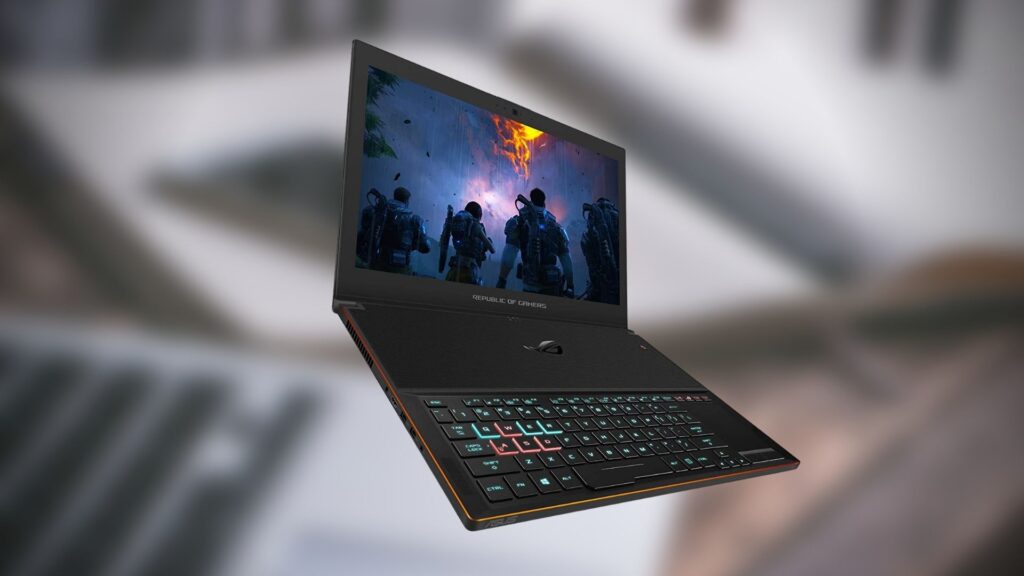
Features:
- If you’re wondering why you should buy the Zephyrus GX501, then you’ll be happy to know that it has a powerful processor in the i7-8750H, like most laptops in the top range for Machine Learning.
- Among the significant changes made by ASUS since the previous model year is the move from a 120Hz to an ultra-high-resolution 144Hz Infinity Display Panel. Another striking change is the colour separation on the screen, which offers dazzling clarity and sharpness no matter what angle you view it from.
- With the new Intel Core i7-8750H processor, you’ll see a 10 to 15 percent increase in performance, and the Nvidia GTX 1080 graphics card will give you a significant boost in graphics performance, no matter what you use it for.
- The ROG Hyperdrive in the GX501 uses the latest NVMe and PCI technology, enabling superfast read speeds of 3478MB/sec, allowing you to load programmes faster than regular laptops and with plenty of storage space, you will never have to lose any files again.
- When open, the Zephyrus GX501 flexes 20% more to allow for faster cooling, which keeps the laptop at a stable temperature for extended periods.
- SmartAmp technology provides audio quality improvements of up to 80%.
Pros:
- A fantastic laptop for Machine Learning with a great user experience.
- Can deal with any programme, no matter how simple or complex it is.
- It weighs 2.3 kilogrammes, making it a welterweight laptop.
- Not the lightest item, but it’s easily transportable and can go with you wherever you go.
- Thunderbolt 3 supports HDMI and multiple ports, including USB 3.0.
- Spend no more than two hours per day on Machine Learning if you have four hours to spare.
- Suitable for deep learning software like TensorFlow and Weka.
- The screen is fantastic.
Cons:
- It’s a significant financial outlay.
Overall, the ASUS Zephyrus GX501 is not a laptop for everyone because of the price and the user interface, but if you need a long-lasting and powerful machine for Machine Learning, this laptop is fantastic and will deliver excellent results.
Specification Table:
| Display Size | 15.60 inch |
| Display Resolution | 1920 x1080 pixels |
| Touchscreen | No |
| Processor | i5 Core |
| RAM | 8 GB |
| OS | Windows 10 |
| SSD | 1 TB |
| Graphics | NVIDIA GeForce GTX 1080 |
| Weight | 2.2 kg |
- GIGABYTE AERO 15 CLASSIC-SA-F74ADW
Aside from the fact that it’s expensive, this laptop is also the world’s first artificial intelligence laptop. While the Gigabyte Aero has great performance for Machine Learning, it’s not the best looking laptop in its class due to the smaller screen size and lower speccations.
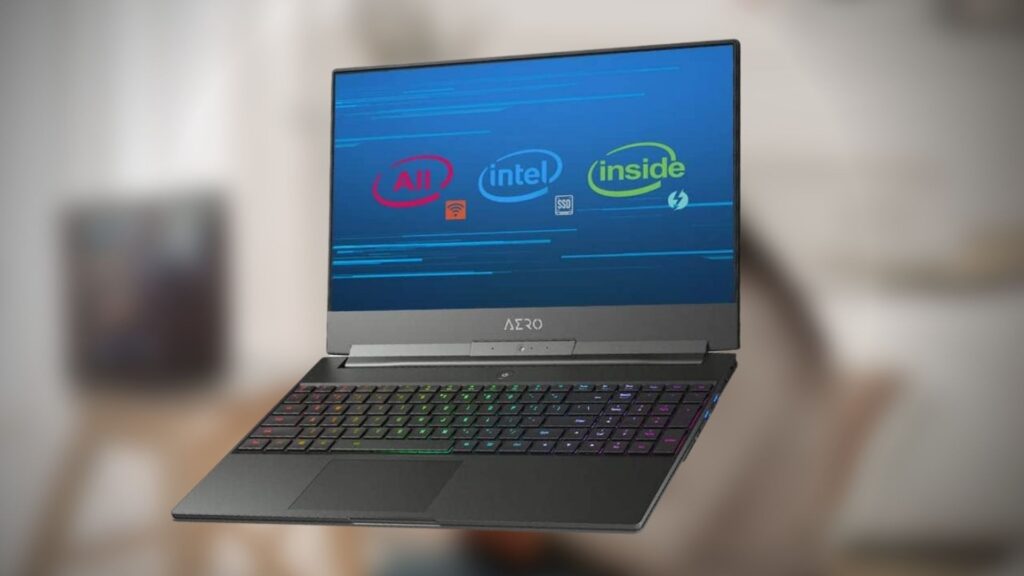
Features:
- For many, the Aero 15 laptop’s long battery life will be a major selling point. With a fully charged battery, you can work for up to nine hours straight on this laptop without interruption. If you’re working with large files and programmes, you’ll get 5 to 6 hours.
- This laptop’s speed is something else we appreciate. Gigabyte’s Aero uses an Intel Core i7 processor from the 9th generation, which has an improvement of almost 10% over the previous generation. Combined with NVIDIA’s GTX 1660 Ti graphics card, you can handle even the most demanding tasks with ease and without stress.
- A 15-inch screen with a 1920×1080 resolution and a 144Hz refresh rate.
Pros:
- The screen is extremely bright, and the colour contrast is superb.
- Exceptional longevity on a single charge.
- The product has a sleek, lightweight, and high-quality feel to it.
- The 300MB per second read speed of a UHS-II SD card is possible thanks to the card’s UHS-II technology.
- Dual cooling fans for an efficient cooling system to effectively regulate the temperature and dissipate the heat.
- Sound quality is exceptional thanks to the NAHIMIC 3 sound technology, which uses the next generation of 7.1 virtual surround to do so.
Cons:
- This laptop’s display has a low level of brightness, making it unsuitable for use when the ambient light is intense.
- Bloatware is out of control – there are way too many of them.
- The webcam is positioned incorrectly, resulting in poor image quality.
Specification Table:
| Display Size | 15.00 inch |
| Display Resolution | 1920 x1080 pixels |
| Touchscreen | No |
| Processor | i7 Core |
| RAM | 16 GB |
| OS | Windows 10 |
| SSD | 512 GB |
| Graphics | NVIDIA GeForce GTX 1660 Ti |
| Weight | 2 kg |
- ASUS VIVOBOOK K571
In terms of machine learning/artificial intelligence, this laptop is the most cost-effective option. The laptop is available in two colours: grey and gold, depending on your preference for gold. It is made of high-quality aluminium, making it both durable and portable.
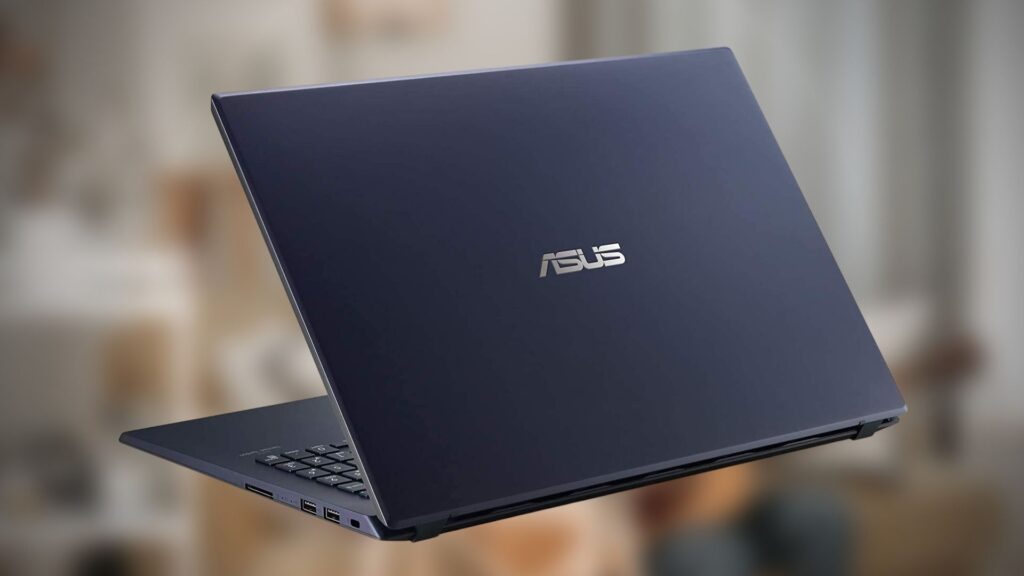
Features:
- Apart from the aesthetics of the laptop, the Asus VivoBook K571 has a widescreen full HD screen with a narrow border, anti-glare, and a 120 Hz refresh rate from the boot to the home screen.
- There are numerous ports on the laptop, including two USB 2.0 ports, an Apple compatible 3.5mm headphone jack, and an SDHC card reader on the right side. The right side of the laptop has two small LED indicators for charging and battery alerts to make sure your battery doesn’t run out while you’re working.
- An HDMI port, USB 3.0 type C port, and an RG45 LAN port with speeds of up to one gigabyte per second are all on the other side.
- This 15.6-inch screen with a 1080 pixel resolution weighs only 1.99 kilogrammes and is ideal for gamers and programmers due to its colour accuracy, clarity, and simplicity.
- This laptop’s GPU is its heart, with capabilities that will impress even the most ardent Machine Learning enthusiast. A smart fan cooling system is built into the laptop to keep it cool so you can work for as long as possible without risking damage to the laptop’s internal components from heat.
- An HDMI port, USB 3.0 type C port, and an RG45 LAN port with speeds of up to one gigabyte per second are all on the other side.
- This 15.6-inch screen with a 1080 pixel resolution weighs only 1.99 kilogrammes and is ideal for gamers and programmers due to its colour accuracy, clarity, and simplicity.
- This laptop’s GPU is its heart, with capabilities that will impress even the most ardent Machine Learning enthusiast. A smart fan cooling system is built into the laptop to keep it cool so you can work for as long as possible without risking damage to the laptop’s internal components from heat.
Pros:
- In all lighting conditions, LCD anti-glare features allow you to see clearly on the screen.
- While the laptop’s battery life is rated at 5 hours, you’ll only get 1-2 hours of use out of it if you’re doing a lot of work. A quick charging feature allows it to reach 50% battery life in only 15 minutes of charging time.
- A powerful CPU allows you to run several programmes at the same time without sacrificing performance.
- With 16 GB of memory, large files can be easily upgraded to 32 GB of memory.
- The hard drive’s rotational speed is set at 5400 RPM, but it can be increased based on the workload placed on the laptop.
- A Haman Kardon audio sound system for a powerful all-around surround sound surround system that does not require external support.
Cons:
- There is room for improvement in the Wi-Fi connectivity.
Overall, it’s not cheap, but for Machine Learning and a fast processor, this is the best option you can get without going broke. With the CPU, GPU, display, and seamless multitasking capabilities, as well as multiple connectivity ports, you will be able to use this laptop for quite some time.
Specification Table:
| Display Size | 15.60 inch |
| Display Resolution | 1920 x1080 pixels |
| Touchscreen | No |
| Processor | i7 Core |
| RAM | 16 GB |
| OS | Windows 10 |
| Hard Disk | 1 TB |
| SSD | 256 GB |
| Graphics | Nvidia GeForce GTX 1650 |
| Weight | 1.8 kg |
- ACER PREDATOR HELIOS 300
Here’s another laptop that is highly recommended for professional machine learners or students who are looking for something fast. It runs on a Windows 10 system and is a 7th generation core CPU. It is also equipped with Nvidia GeForce 10 GPU, making it ideal for a fun game. It has a total of 16 GB of RAM, with 256 GB of SSD space. The screen has a resolution of 15.6 inches and HD of 1920 x 1080. Furthermore, the battery can last up to seven hours without charging.
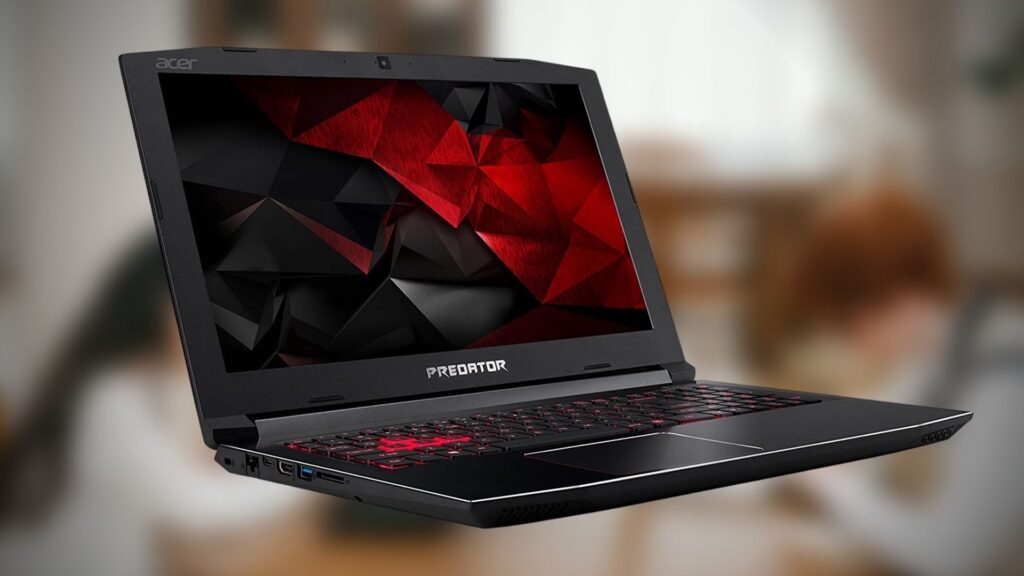
Features:
- The Predator Helios 300 from Acer has a powerful Intel i7 Core Processor of the ninth generation and GeForce RTX of excellent graphical quality and AeroBlade 3d technology of the fourth generation to take you back when you take action for more than enough reasons to continue to recreate for your machine education programme.
- The Helios 300 16 GB RAM, 256 BG NVMe guarantees that no software file is too large to find space on the laptop or impair your laptop’s speed and efficiency.
- If storage is not sufficient, helios can be efficiently upgraded to 1 TB without affecting power or action.
- Well, you need a screen to match the action, if you work with a large programme as in-depth as machine and deep learning.
- The Helios 300 features a 15.6-inch 7.9-mm IPS bezel colour accuracy and viewing panel with a screen-body ratio of 79 percent. That means you see exactly what you need to see, despite the direction you are looking at.
- This 144Hz Refresh rate device is a full HD, with a 3m2 overdrive response, with an outstanding video record of exceptional quality, and is very quickly displayed on this device.
- The Helios 300 has more than necessary ports, which need connectivity. This port with HDMI 2.0 enables you to enjoy additional viewing and learn about your machine via the roof. The clearer you see what you are working on, the better the results.
- The Helios 300 offers four additional USB ports of different sizes, with no Thunderbolt port, in addition to the HDMI port.
- With the PredatorSense app you gain full control of your laptop functions, giving you full access to all aspects of this powerful device. Moreover, the Predator keyboard with a concave WASD and a Turbo key is simply wonderful.
Pros:
- Powerful, fast with the latest technology to offer your Machine Learning project everything you need.
- The AeroBlade technology of the fourth generation ensures quiet cooling, while maintaining a good temperature on the laptop, without interrupting your work.
- Reader of memory card.
- Jack with a microphone.
- Security fingerprint reader.
- 2 sound-surround system of stunning audio quality.
- HDMI multifunctional ports.
- Touchpad accuracy.
- Four cell Li-ion batteries with a capacity of 3320 mAh.
Cons:
- The display of the screen might be better.
- The battery life with all that power is easily maximised by only 3-4 hours.
The Acer Predator Helios 300 is a powerful machine for deep learning in general. With state-of-the-art techniques and processors, this device ensures that you are not interrupted half-way. Best of all, for AI, ML and DL students it is affordable and best.
Specification Table:
| Display Size | 17.30 inch |
| Display Resolution | 1920 x 1080 pixels |
| Touchscreen | No |
| Processor | i7 Core |
| RAM | 16 GB |
| OS | Windows 10 |
| Hard Disk | No |
| SSD | No |
| Graphics | Nvidia GeForce GTX 1050 Ti |
| Weight | 2.70 kg |
- DELL XPS 13
While you talk about computer computers that are too good to be ignored when listing the best for machine learning, you won’t miss the Dell XPS 13 at all.
The Dell XPS 13 is one of the biggest images of any programmer. It was known as the king of 13′′ laptops and, in real terms, it was able to do what it had done? The programming of machine learning has become an absolute pleasure object.
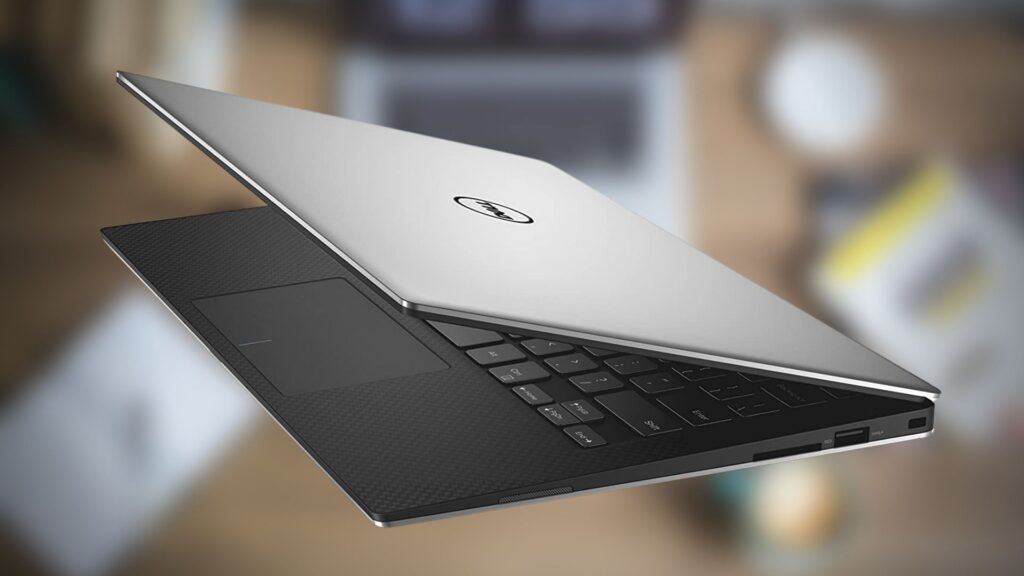
Features:
- The XPS 13 is admirably thin and solid, if not particularly light. The touch-screen configuration reviewed here, measures 0.58 by 11.6 by 7.8 inches (HWD) and weighs 2.8 pounds. Versions without a touch screen weigh slightly less, at 2.64 pounds, because they lack the Gorilla Glass 6 coating over the display found on the touch version.
- The extra weight of the XPS 13 allows for high-quality materials and a sleek design. As soon as you take the system out of its sleek white box and run your fingers over the aluminum lid and edges, you’ll notice how densely built it is. The edges are anodized twice, according to Dell, to prevent scratch damage from repeated plugging and unplugging of peripherals.
- Opening the lid reveals, even more, to look at. Platinum Silver with a black carbon-fiber palm rest or Frost White with an Alpine White composite-fiber palm rest are the two color options.
- The palm rest is particularly stylish, with a UV- and stain-resistant coating to prevent yellowing and discoloration.
- There’s an XPS for everyone, whether you want an ultraportable for frequent travel or a large-screen machine with serious computing power.
- There’s even a 2-in-1 version of the XPS 13 with a 360-degree hinge that converts the laptop into a tablet.
- The XPS 13’s display comes in three sizes, all of which have an unusual 16:10 aspect ratio rather than the more common 16:9. The former results in more vertical space, which is useful when scrolling through websites or updating long documents.
- The resolution is slightly higher than full HD (1,920 by 1,080 pixels) due to the aspect ratio, but significantly lower than the Retina Display of the MacBook Pro or the PixelSense display of the Microsoft Surface Laptop 3. The XPS 13 can, however, be ordered with a 3,840-by-2,400-pixel panel, which outstrips not only those two laptops, but also the dimensions of standard widescreen 4K displays (3,840 by 2,160 pixels).
- A 720p webcam with IR face recognition sensors is located above the centre of the display in an impressive feat of downsizing. It has average video quality for a laptop camera, which means that indoor shots are slightly noisy and fuzzy when compared to the quality of even a mid-range phone’s camera.
- Dell claims that a new four-piece lens and temporal noise reduction have improved the camera quality, but if you’re planning a Skype session in your living room at night, you’ll probably want to use your phone.
- The camera’s main innovation is its tiny size—the screen on the XPS 13 occupies 91.5 percent of the chassis’s footprint, which means the bezels around it are razor-thin.
- One of the consequences of a small laptop is that there is less room for ports. The XPS 13 is limited to two USB Type-C ports, one of which supports Thunderbolt 4, a headphone jack, and a microSD card reader. To connect an external monitor or USB Type-A peripherals, you’ll need an adapter or dongle. (Dell includes a USB adapter in the box, which is a nice touch.) This could be a disadvantage for those who work from home and will most likely use the XPS 13 with an external display. While the XPS 13 is simply following the trend of fewer and fewer ports, its selection is stingy even among its peers.
- The ultraportable features the most recent Wi-Fi 6 (802.11ax) and Bluetooth 5 wireless connectivity standards, which are ideal for stable internet connections as well as wireless keyboards and mice. However, many users will be content with the built-in touchpad and keyboard. The large keycaps and large surface area of the pad are welcome improvements over some competitors’ cramped equivalents, such as the Asus ZenBook 13.
- The power button in the upper right corner of the keyboard also functions as a fingerprint reader, allowing you to log in to your Windows 10 account without entering a password.
- The stereo speakers on the XPS 13 provide excellent audio quality. They produce up to 4 watts of output when combined, and they’re well-balanced enough to give the laptop far richer and more dimensional sound than you’d expect from such a small package. Much of the audio is routed through a grille on the laptop’s bottom.
- It, too, only has 8GB and is soldered, so it cannot be upgraded in the future. Nonetheless, RAM implications aside, the majority of entry-level users or bedroom music dabblers should find it meets the majority of their needs. Beatmakers who rely heavily on samples may struggle.
- It has a modern 7th generation dual-core i5 processor to handle heavy workloads, a 128GB SSD and runs Windows 10 64 bit.
- Dell provides a one-year hardware warranty on the XPS 13, with optional extensions of up to four years available for an additional fee.
Pros:
- It has a modern and very nice appearance.
- Its sound quality is excellent, so you can consider it if you are a sound fan.
- The keyboard is comfortable.
- It provides incredible performance.
- Multiple connectivities – 2 ports with Thunderbolt, 1 USB 3.1 port with type C, Micro SD reading, headphone jack.
- Weighing at a weight of 1.23 kilogrammes super light and portable.
- The keyboard is highly reactive and smooth.
- The quality of audio is fantastic and impeccable.
- Excellent CPU and GPU combo performance.
Cons:
- The resolution of the screen is relatively low.
- No USB ports of full size.
In general, you can overcome Dell XPS 13 by finding the best machine to buy for Machine Learning and multitasking. This device, which is almost called the king of laptops, delivers excellent results for all programmes and projects, in particular for machine learning.
Specification Table:
| Display Size | 13.30 inch |
| Display Resolution | 3200 x 1800 pixels |
| Touchscreen | Yes |
| Processor | i5 Core |
| RAM | 8 GB |
| OS | Windows 10 |
| Hard Disk | No |
| SSD | 128 GB |
| Graphics | Intel Integrated HD Graphics 520 |
| Weight | 1.29 kg |
- DELL XPS 15
This laptop is high on the list of the best laptops for civil engineering students in 2022 for a civil engineering student. If you like Macs, you’ll like this laptop.
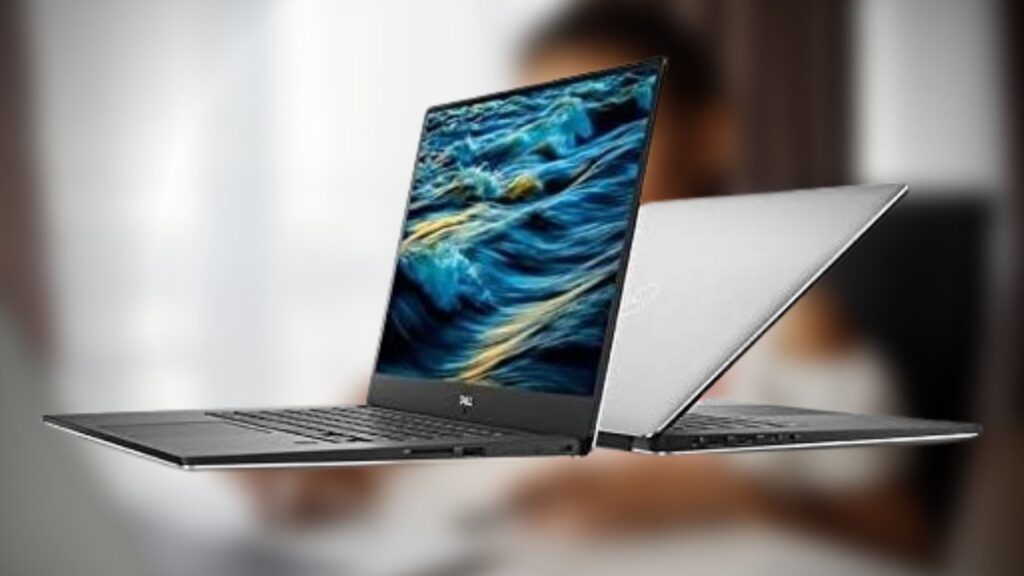
Features:
- It has a 15.6-inch screen with an impressive resolution of 3840 x 2160 pixels.
- The processor is a 7th Generation Intel Core i5-7300HQ Quad-Core processor with 256 GB SSD and 8 GB RAM storage space.
- The SSD space is sufficient for a civil engineering student to install a variety of engineering software and run multiple programs at the same time without stalling or lagging.
- Its graphics processor is the NVIDIA GeForce GTX 1050, which is adequate for 3D modeling and design software. It is powered by the Windows 10 Home operating system.
- This device’s 4K screen is a touch display. (It should be noted that this laptop is also available in HD.) It has a backlit keyboard and a sleek trackpad for easy navigation.
- This device weighs only 3.9 pounds, which is impressive given its 15.6-inch screen size. When in use, the Dell XPS 15’s battery can last for 6 hours before needing to be recharged.
Pros:
- It’s very portable, and because it’s so light, it’s easy to transport.
- This device is capable of running any civil engineering software without lagging.
Cons:
- It does not have an optical drive.
- It may be prohibitively expensive for a student on a tight budget.
Specification Table:
| Display Size | 15.60 inch |
| Display Resolution | 1920 x 1080 pixels |
| Touchscreen | Yes |
| Processor | i5 Core |
| RAM | 4 GB |
| OS | Windows 10 |
| Hard Disk | No |
| SSD | 256 GB |
| Graphics | Nvidia GeForce GTX 1050 Ti |
| Weight | 1.80 kg |
- LAMBDA TENSORBOOK AI WORKSTATION LAPTOP
The Lambda Labs and TensorBook algorithms are at the top of laptops for rigorous calculation and mass training. This laptop has some fundamental machine learning codes, vocabulary, machine terminology, and profound learning programmed beforehand.
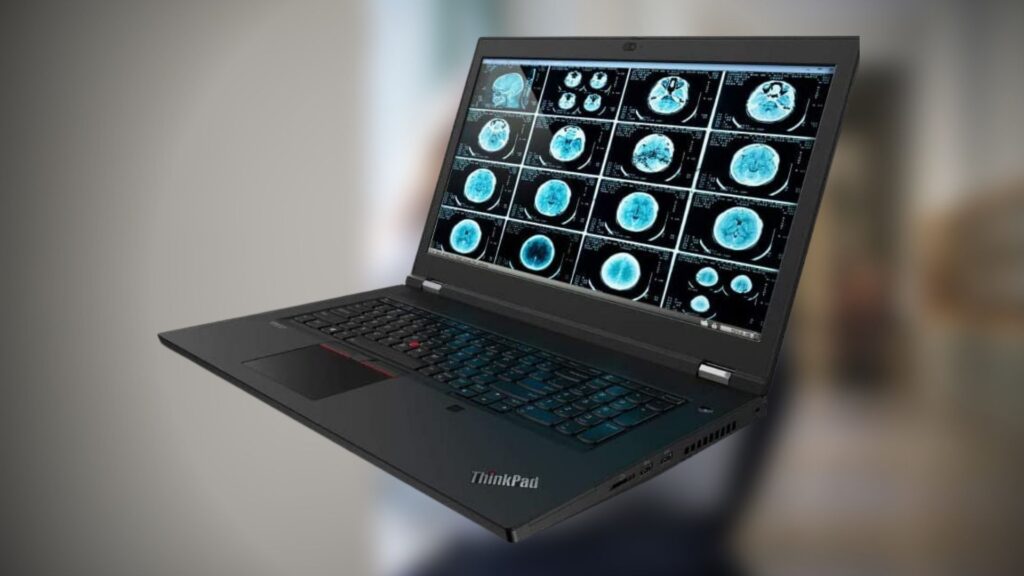
Features:
- The seamless compatibility with most ML Software is possible thanks to the pre-installed Ubuntu, TensorFlow, PyTorch, CUDA, Keras and cuDNN in the system.
- The 16.1-inch QHD screen makes machine learning and other relaxing purposes, such as watching films, gaming and streaming online efficiently exceptional.
- Massive 32GB and 1TB storage makes it possible to choose machine teaching and to run efficiently, maschine-developed and stress-free programmes.
- It is also great for multi-task use of the NVIDIA 1070 GPU to do great work during any ML\DL task on your laptop.
Pros:
- Takes a large 2 to medium time battery life.
- A powerful laptop that takes on any task or programme with an excellent design.
- Machine Learning designed.
Cons:
- When performing large tasks, the battery life is limited to 45 minutes, necessitating the need to plug into a power outlet if working for an extended period of time.
- It is prohibitively expensive, particularly for a newcomer to the world of Machine Learning.
Aside from the battery life, the TensorBook is without a doubt the best laptop for machine and deep learning programmes. Furthermore, the extensive Machine Learning in-built software allows users to quickly become acquainted with the programme while also working efficiently. Overall, the TensorBook is an excellent choice for a powerful entry-level Machine Learning laptop.
Specification Table:
| Display Size | 16.10 inch |
| Display Resolution | 1920 x 1080 pixels |
| Touchscreen | Yes |
| Processor | i7 Core |
| RAM | 64 GB |
| OS | Windows 10 |
| Hard Disk | No |
| SSD | 1 TB |
| Graphics | NVIDIA 1070/1080 |
| Weight | 1.90 kg |
- MICROSOFT SURFACE PRO 6
This laptop is one of the best machine learning laptops in the sense that it can be used as both a laptop and a tablet, which is a huge selling point for me. It has a 7th generation i7 core, so using it for heavy work will not degrade its performance.
As a result, you can have one of the best laptops for machine learning that you can use while travelling. The Surface Pro runs the Windows 10 operating system, making it suitable for machine learning.
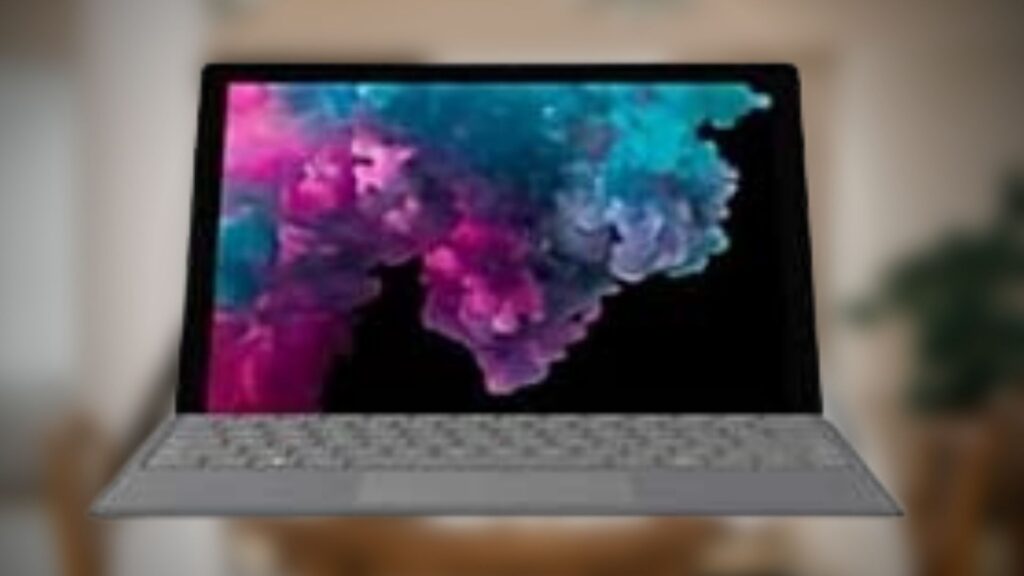
Features:
- The Surface Pro 6 follows in the footsteps of previous models, albeit with a minor tweak. With the kickstand extended 165 degrees, you still have three primary modes: tablet, laptop, and studio.
- The Surface Pro 6’s metal kickstand is still easy to use. As you type, this 2-in-1 bounces around a little in your lap, but it feels sturdy and stable enough. The only real criticism levelled at the design is the somewhat thick bezels surrounding the display.
- The Surface Pro 6 weighs only 1.7 pounds as a tablet and 2.4 pounds with the keyboard attached.
- Call it stubbornness or simply a desire to stick with its proprietary docking connector, but Microsoft refused to embrace USB-C on the Surface Pro 6 for whatever reason. That means you can’t charge with USB-C or connect to a growing number of USB-C peripherals and Thunderbolt 3 docks. If you want to output to multiple monitors at the same time, you’ll need to use Microsoft’s Surface Connect port to connect to the company’s $199 Surface Connect dock.
- Aside from the Surface Connect port, the right side of the device has a USB 3.0 port and a mini DisplayPort. The headphone jack is located on the left side. The microSD card slot is located beneath the kickstand if you want to expand the storage.
- The Surface Pro 6’s 12.3-inch PixelSense display is one of the best you’ll find on a 2-in-1. At 2736 x 1824 pixels, this panel is not only sharp, but also bright and colourful.
- The Surface Pro 6’s two front-firing speakers produce loud and clear audio.
- The typing experience on the Surface Pro 6’s keyboard is exceptional for a 2-in-1 device. Given how thin the Type Cover is, the layout provides 1.3 mm of key travel, which is comfortable. In comparison, the keyboard on the iPad Pro has only 0.5mm of travel.
- The Surface Pro 6’s glass touchpad is as precise as ever. Scrolling was smooth, and gestures like three-finger app switching worked well.
- Microsoft charges an additional $99 for the Surface Pen, but if you’re purchasing the Surface Pro 6, this accessory is well worth it. The pen not only has 4,096 levels of sensitivity and a rubber eraser on the back, but you can also use tilt for shading in various apps. The Surface Pen is also useful for annotating in apps like Microsoft Edge, making handwritten notes in the Mail app, and pencilling in edits in Microsoft Word.
- The Surface Pro 6 outperforms the previous Surface Pro in terms of performance, thanks to its 8th-generation, quad-core Core i5-8250U processor and 8GB of RAM. (Serious power users can upgrade to a Core i7 processor and 16GB of RAM.)
- The Surface Pro 6’s Intel UHD 620 graphics card is certainly powerful enough to handle casual games.
- The Surface Pro’s rear 8-MP camera will suffice in a pinch, and this slate is certainly light enough to use as a camera in the field. The 5-megapixel front-facing camera will suffice for Skype chats and other video-calling apps. The front camera also supports Windows Hello, making it simple to log in to the Surface Pro 6 by simply starting from the front.
Pros:
- Accessibility in two ways.
- Portable and lightweight.
- Both affordable and long-lasting.
- The battery life is excellent.
Cons:
- Expensive stylus.
- There are a limited number of connectivity ports.
Specification Table:
| Display Size | 12.30 inch |
| Display Resolution | 2736 x 1824 pixels |
| Touchscreen | Yes |
| Processor | i5 Core |
| RAM | 8 GB |
| OS | Windows 10 |
| Hard Disk | No |
| SSD | 256 GB |
| Graphics | Intel Integrated Graphics UHD |
| Weight | 775 g |
- APPLE MACBOOK PRO
This is one of the most powerful laptops available for CPU-intensive tasks such as video rendering. Bolder moves are required.
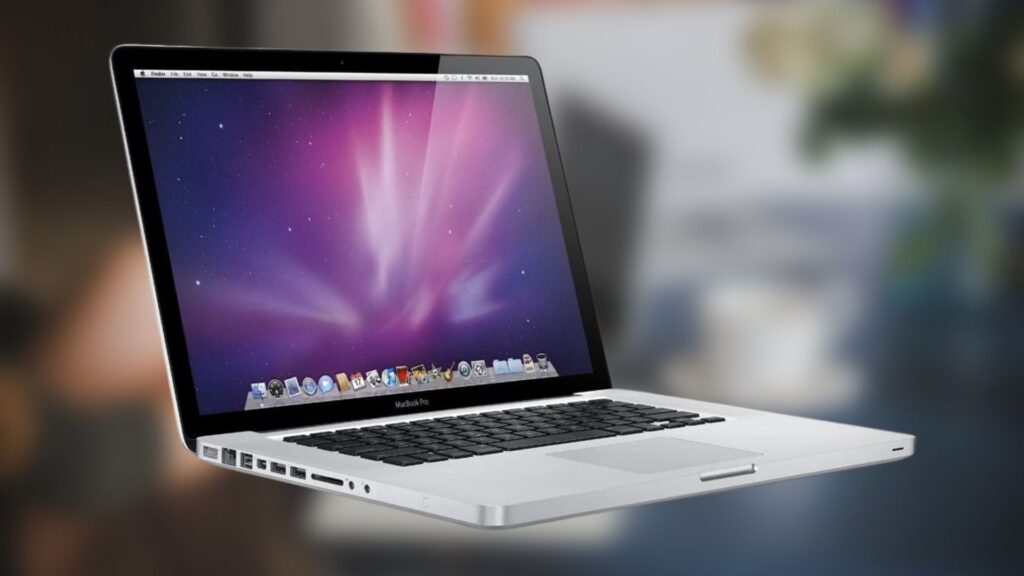
Features:
- The latest update brings an even more powerful Core i9—an eight-core chip with a maximum boost speed of 5GHz—to a macOS laptop for the first time since last year’s MacBook Pro refresh. Both chips use the same “Coffee Lake” microarchitecture, but the Core i9 in the 2019 MacBook Pro is from Intel’s most recent 9th generation. Last year’s model’s 8th generation chip has six cores and a maximum boost speed of 4.8GHz. The new laptop also includes an upgraded AMD Radeon Pro Vega graphics processor with a rarely seen type of fast video memory.
- The first oddity is the keyboard, which is a slightly updated version of Apple’s infamous butterfly-switch design, which has been a feature of MacBooks since 2016. Using butterfly switches produces an extremely stable key (even if you hit it off-center, the depression is even), but also an extremely short distance to travel when pressing the key. You don’t type; instead, you tap like you would on a smartphone.
- The Touch Bar, which is exclusive to Apple, is a narrow, touch-sensitive display with contextual controls that change depending on the app you’re using. Because Macs lack touch capability on their main screens, this is your only chance to interact with macOS via touch. The Touch Bar comes standard on every 15-inch MacBook Pro.
- Large speaker grilles extend from the top of the Touch Bar to the bottom of the keyboard on either side of the keyboard, taking up the entire margin between the keyboard and the chassis’s edges. The speakers on the MacBook Pro are among the best I’ve heard on a laptop of this size in a long time.
- The 15.4-inch LED Retina display is another standout feature. This panel uses in-plane switching (IPS) technology to increase viewing angles and has a bright 500-nit backlight. Its 2,880-by-1,800-pixel resolution isn’t quite 4K, but the colours are as vibrant and the text is as sharp as any 4K display in a recent laptop. This is due in part to support for the P3 colour gamut. Apple’s automatic True Tone white-balance adjustment is also in play. Depending on the light source in the room, the latter makes the colours on the screen appear warmer or cooler.
- The MacBook Pro includes a 3.5mm audio jack as well as four USB Type-C ports. The USBs are arranged in a row of two on each side of the chassis. However, that is the entire I/O complement. To connect to an external display, you’ll most likely need a USB Type-C-to-DisplayPort or Type-C-to-HDMI adapter, as well as an Ethernet adapter for wired networking. The silver lining is that, in addition to functioning as standard USB ports, all of the USB Type-C ports support the Thunderbolt 3 interface and its 40Gbps maximum data rates.
- Wireless connectivity consists of the standard 802.11ac Wi-Fi and Bluetooth 5.0. Support for the 802.11ax wireless standard, also known as Wi-Fi 6, is oddly absent. Wi-Fi 6 is still in its early stages, with only a few routers and other devices supporting it, but it is the Wi-Fi of the future.
- With a powerful 2.6 GHz Intel i7 processor, you can expect this Apple machine to be a powerhouse. By creating an animal for each of you, you can achieve turbo boosts of up to 45 GHz.
Pros:
- Excellent performance on CPU-limited workflows in test configuration.
- A stunning Retina display.
- Large and precise trackpad.
- There are four Thunderbolt 3 ports.
Cons:
- Expensive when configured, with a prohibitively expensive top-capacity SSD.
- The distance between key locations remains very short.
- Bezels could be slimmed down.
- There are no dedicated video output ports or USB Type-A ports.
Specification Table:
| Display Size | 13.30 inch |
| Display Resolution | 2560 x 1600 pixels |
| Touchscreen | No |
| Processor | i5 Core |
| RAM | 12 GB |
| OS | macOS |
| Hard Disk | No |
| SSD | 512 GB |
| Graphics | Integrated Graphics Processor |
| Weight | 1.37 kg |
- APPLE MACBOOK AIR
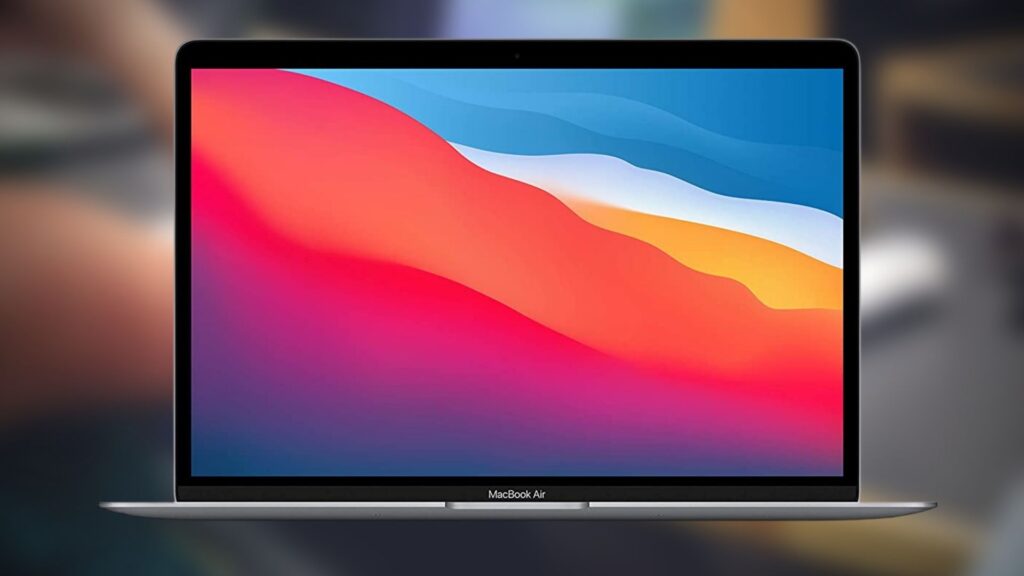
Features:
- It is still available in three colors: Space Gray, Gold, and Silver. The all-metal design is sturdy and high-quality, delivering that envious MacBook feeling even after so many years.
- The MacBook Air is still one of the most luxurious portable builds available. It measures 0.63 by 11.97 by 8.36 inches (HWD) and weighs 2.8 pounds, making it one of the thinnest and lightest laptops available.
- Furthermore, the Touch ID sensor in the top right corner of the keyboard allows you to turn on the laptop and sign in with your fingerprint, eliminating the need for passwords.
- The top-tier keyboard is complemented by arguably the best touchpad on any laptop, which should come as no surprise to any previous MacBook user.
- The display is next, and it is as brilliant as ever. Apple’s 13.3-inch Retina Display, with a resolution of 2,560 by 1,600 pixels and a 16:10 aspect ratio, is used once more.
- The Retina Display’s resolution is extremely sharp without being overkill for the lighter type of general use work that a MacBook Air is intended for.
- Applications and the browser run quickly, even when multiple programs and tabs are open, and it wakes up quickly from sleep. The touchpad and keyboard are both enjoyable to use, and the laptop is light enough to be carried around with one arm. Colours pop and textures are sharp on the display.
- The MacBook Air has a front-facing 720p webcam, which is more important than ever in this era of remote work, as well as Wi-Fi 6 and Bluetooth support.
- In terms of physical connections, there aren’t many on this laptop: The MacBook Air only has two USB Type-C ports on the left side and one on the right. Both of these USB-C ports are at least functional, as they support Thunderbolt 3, charging, and video output (DisplayPort). The ports can also support VGA and HDMI output through the use of adapters, which are sold separately.
- The 8GB RAM is faster than expected, allowing you to run resource-intensive applications such as QuickBooks, MS-Excel, and other software modules without experiencing system slowdowns. Storage-wise, there is a 512GB SSD unit in play, which is best known for quickly loading apps and booting up the latest macOS.
- The battery backup, which can last up to 18 hours, adds to the 2.8-pound Apple MacBook Air M1’s appeal as one of the best notebooks for film students and aspiring professionals.
Pros:
- Excellent value, especially for a MacBook.
- Apple’s new M1 processor provides significantly improved performance.
- The battery life is exceptional.
Cons:
- There are only two USB Type-C connections available.
- There is still no touch-screen option.
Specification Table:
| Display Size | 13.30 inch |
| Display Resolution | 2560×1600 pixels |
| Touchscreen | No |
| Processor | i3 Core |
| RAM | 8 GB |
| OS | macOS |
| SSD | 256 GB |
| Graphics | Integrated Graphics Processor |
| Weight | 1.29 kg |
The Final Verdict
These laptops and their reviews have helped you narrow down your options for the best deep learning workstation.
Of course, there are others you can look into, some of which are less expensive than the ones listed. However, you should be aware that when it comes to machine learning, quality is the key to achieving excellent results.
Most of the less expensive devices on the market are unlikely to perform half as well as the ones listed. Even if you do not have the funds to purchase what you require to enjoy your job, you can either save for a while or simply choose the more affordable options from this list.
The best laptop for machine and deep learning is the Apple MacBook Pro. This is one of the most powerful laptops available for CPU-intensive tasks such as video rendering.
It may be less expensive to buy the best laptops for data science on a budget and build whatever features you want into it. However, in the end, it is best to buy one that has everything you need to avoid dealing with performance issues and a slew of other avoidable issues.
If money is no object and you want the most powerful laptop ever made, the Razer Blade 15 Studio Edition (2020) might be the best laptop for engineering students like you. Of course, it will cost you a lot of money. However, if you’ve got the cash, this has all the serious firepower you’ll ever need.
If you cannot afford an expensive laptop, you can build your own to the specifications you desire, which some people believe is better and more affordable than purchasing a new one.
However, it may interest you to know that it is preferable to purchase a laptop for science and technology rather than build one in order to avoid issues that may impede the progress of Machine Learning training.
Frequently Asked Questions(FAQs)
Is 16GB of RAM sufficient for machine learning?
No, 16 GB is the minimum recommended RAM size; 32 GB or higher is preferable.
How much RAM am I going to need for TensorFlow?
It is recommended that you have at least 24 GB of RAM to match your largest GPU.
Is a GPU required for deep learning?
Machine learning necessitates a massive dataset; to efficiently compute the data, GPU is the best option.
What is the best laptop for Python programming?
All of the laptops listed above are suitable for Python programming.







